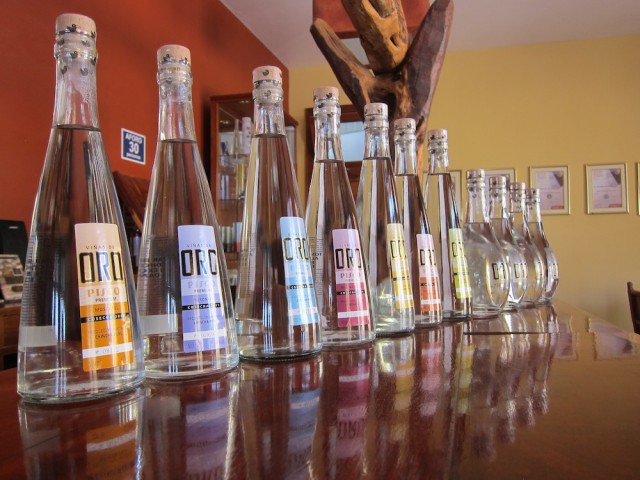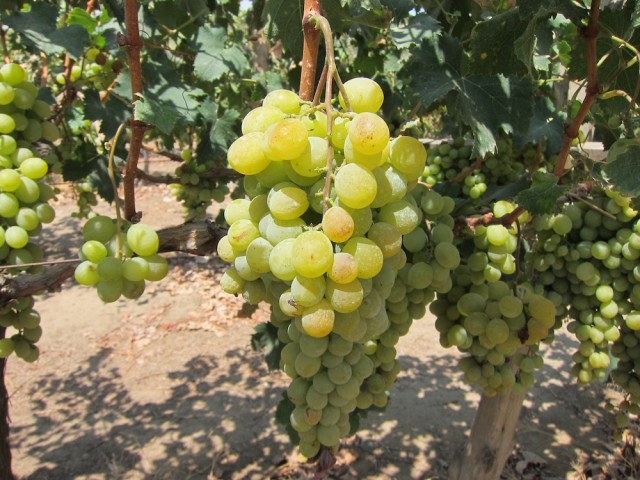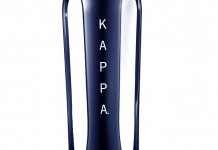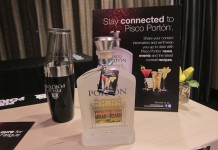
There’s a buzz in the air in Lima, Peru. It’s not just the scores of cars, often stuck in gridlock, or the packs of young people who walk the streets and dine at a bevy of innovative late night Peruvian eateries. Peru has a palpable energy of a place where something amazing is happening. After a series of historical setbacks over the past thirty years, including a military coup, a serious earthquake, and a tsunami, Peru has overcome adversity, picked itself up, dusted itself off, and become one of the fastest growing economies in South America.
A notable part of this Peruvian renaissance has been Peru’s culinary offerings, including world renowned fusion cuisine and one of the world’s best grape-based spirits, pisco. Understanding pisco isn’t easy; unlike other spirit categories that can quickly be lumped together in easy-to-fit groupings, pisco has a complexity of offerings that takes some effort to really understand, but the rewards for taking that time are immense.
This could be one of the reasons why so many American bartenders have made the trek down to Peru to spend time with key pisco producers. “It’s an incredible experience,” exclaims Clinton Terry, bartender at Corazon del Mar in Nantucket. “Traveling to Peru, you really get to understand these grapes and the amazing beauty they have to offer.” Nathan Dalton, head bartender of Felipe’s Taqueria in New Orleans, decided to skip his beach vacation in favor of coming to Peru to learn about pisco. “Coming down here pays dividends. People come to my bar because they know they are going to be exposed to something new,” remarks Nathan, “and it’s just fun!”

Pisco isn’t a new spirit category – it’s been produced in Peru for at least 400 years – but like Peru, the category is experiencing a real renaissance that can be directly tied to a handful of premium pisco producers dedicated to producing a world class spirit and getting others, especially Americans, to understand and explore the vast world of pisco. One of the key figures in this pisco renaissance is Johnny Schuler, aka “King Pisco” and head of Pisco Porton. Former race car driver, professional golfer, caterer, restaurateur, TV personality (host of Peru’s popular Por Las Rutas del Pisco), and avid horse fanatic, Johnny Schuler is a wild mix of Willy Wonka and PT Barnum. Schuler has dedicated much of his life to promoting pisco. A phone call from Texas billionaire Bill Kallop brought Johnny from pisco advocate to being at the helm of the largest pisco producer in Peru and one of most impressive distilleries in the world, Pisco Porton. “Bill one day said to me, ‘You’re not doing this just for us’, and I said no Bill, I’m doing this for pisco, for the country, for the product, because I’m convinced we have the best distilled spirit from wine in the world.”
If Johnny Schuler is King Pisco, then Diego Loret de Mola is pisco’s prince and heir apparent. “Who is going to defend, promote, help the country, help 500 producers make it? That is what I have been doing for 25 years and I think Diego can do that. Diego is doing a damn good job in the States, he has the vision and the knowledge,” says Johnny Schuler.

Founder of Barsol Pisco, Diego has become well known for his work in the United States promoting not only his own brand of pisco but the category as a whole. “My objective is not to sell only a brand of pisco, but I sell a whole legacy, tradition, and culture through a glass of the best spirit in the world. I don’t sell pisco – I sell a Peru in glass.” Passionate about both Peru and pisco, Diego revels in exposing people to the best of Peruvian food, spirits, and culture. Diego also represents a breed of pisco producers fusing traditional pisco production techniques with modern tools. “We’re always looking at pushing the limits of excellence in what we do and we are constantly looking for the best tools to make the most amazing pisco possible.”

“Quebranta, Quebranta, Quebranta!” exclaims Diego, “It’s a grape that does the heaving lifting as a base for blends, but people don’t often see the beauty in the grape itself.” Barsol’s Quebranta Mosto Verde is perhaps the finest expression of the Quebranta grape to ever be bottled. Diego’s love for what each individual grape has to offer can be seen in Barsol’s Italia and Torontel offerings, which are nothing short of magical.
The pisco renaissance has also been fueled by people like Melanie Asher, head of Macchu Pisco. Melanie represents a growing field of small producers that also includes Campo de Encanto Pisco, who essentially rent time at other distilleries to make their pisco. “As a small producer it doesn’t make sense to own something that sits idle for 3/4 of the year. We get to produce our pisco to our specifications, our way, and then we get to rest and blend the pisco. The blending process is simply magical.”

Perhaps the strongest element that speaks to the future success of pisco is the way that pisco producers approach each other. “Diego and I are competitors, but we are friends. I don’t need Diego for Porton, I need him for pisco,” explains Johnny Schuler. This kind of “we’re all in this together” attitude unites a passionate group of people whose sole vision is to return pisco to its former glory and re-establish it as one of the great white spirits of the world.

Decoding Pisco
The best way to understand pisco is to approach it like wine: grape, style, and terroir all play an important role.
Styles:
Puro – single grape pisco, fully fermented before distilling. Drier and slightly less aromatic, often used for mixing cocktails, especially Quebranta.
Acholado – a blend of distilled grapes, often used in Pisco Sours.
Mosto Verde – single grape pisco distilled before it is fully fermented which gives it a richer, sweeter and often more aromatic character. Great neat.

Grapes:
There are eight grapes which have been approved for use in Peruvian Pisco. They include four whose characteristics are less aromatic and four whose are more aromatic.
Less Aromatic
Quebranta, Negra Criolla, Mollar, Uvina – Quebranta is the most common, with a hearty structure, often the backbone of many major Acholados.
More Aromatic
Italia, Moscatel, Torentel, Albilla – Italia and Torentel are most common, known for their intensely floral qualities.

Regions:
Pisco is mainly produced in the southern valleys of Peru including Ica, Pisco, Chincha, and Nasca. Because each one is at a different elevation and distance from the ocean, pisco produced in each region will have a different character.
















